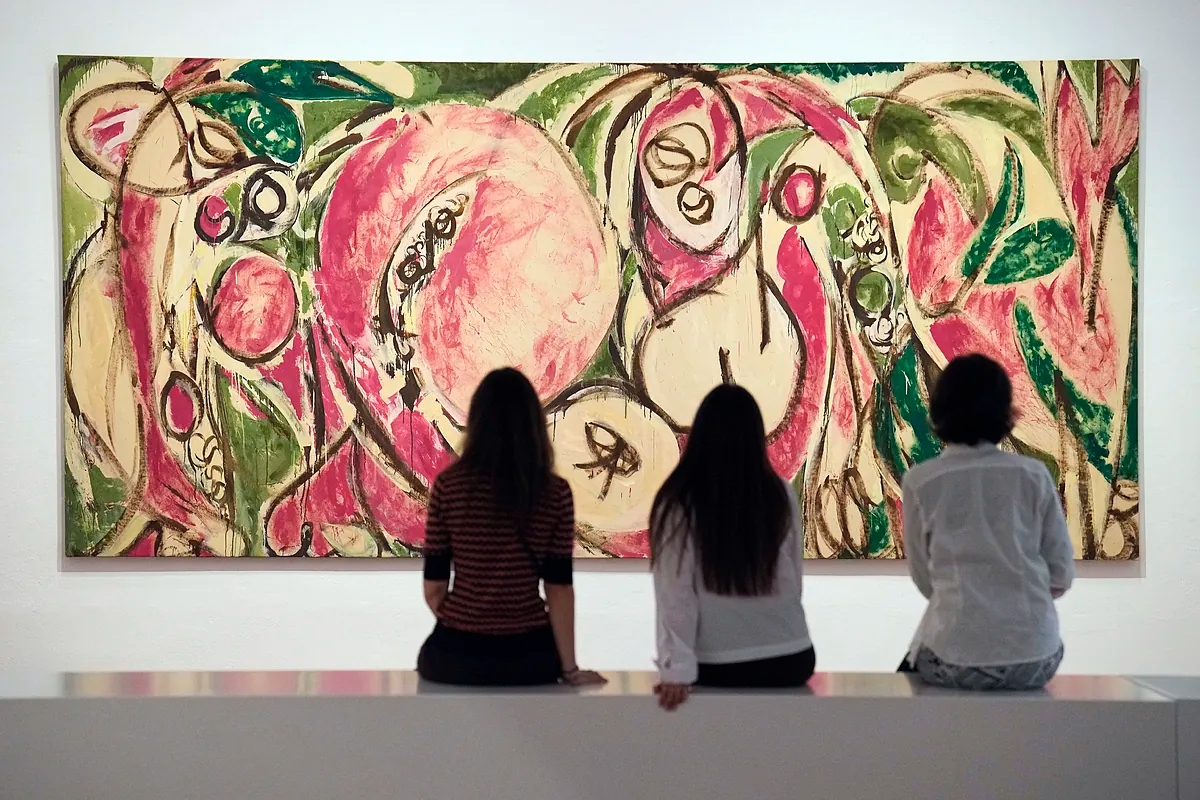Miró's 'American Dream': "In Spain, he was marked by limitations and repression; in the US, he found a space for freedom and creativity."

Miró wouldn't have been Miró without Paris. His intimate geography begins in the Barcelona where he was born in 1893 and continues on his island of Mallorca, where he was already painting exquisite landscapes as a teenager. It also extends to the Tarragona countryside, which fascinated him with its secret landscapes (like the young Picasso, by the way) and where he would paint the iconic canvas La Masia (1921-1922), which Ernest Hemingway fell in love with and bought in installments, directly from the artist ("everything I loved about Spain," the writer said, pulsated in that painting). Until now, Hemingway's was the most popular American anecdote about Joan Miró. But Miró wouldn't have been Miró without the United States, without the impact he had on the other side of the Atlantic while Spain was locked in a dictatorship; without the exchanges with other artists, from Jackson Pollock to Mark Rothko ; without the great sculptures in the streets of Houston and Chicago, larger than any we have in Spain.
“In the 1940s, marked by limitations and repression, Miró found a space of freedom and creativity in the United States. He established relationships with American artists with whom he shared an experimental vision of art, weaving a map of complicities that helped place Miró's work in a global context,” explains Marko Daniel, director of the Miró Foundation in Barcelona, who reveals this unprecedented relationship in the great anthological exhibition Miró and the United States , co-produced with The Phillips Collection in Washington, where it will travel in spring 2026. Sponsored by the BBVA Foundation (it has already 36 years of patronage and even a presence on the museum's Board of Trustees), this thesis exhibition displays 138 works by 49 artists, by Miró himself, of course, confronting the creators who forged modern art.

"It should be noted that the conversation was artistic, because Miró never learned English. So the implication of his exchanges with other artists was very pure," notes Matthew Gale , director of the Phillips Collection and also the exhibition's curator. "Miró crossed the Atlantic seven times. These trips have formed the basis of our research. The first time was in 1947, and he found an artistic context where he was admired and understood in a way that contrasted with the relative isolation he experienced in Spain ," he adds.
In addition to telling a previously untold story, about which very little research has been done, the exhibition has two great strengths: the opportunity to see paintings by Pollock, Rothko or Krasner in Spain and to see some Mirós return home after several decades in America with exceptional loans from MoMA (which, among others, is lending the precious Personage Throwing a Stone at a Bird (1926), the first work it acquired from the painter in 1937 and which does not usually leave the museum), Harvard (with its exquisite Mural Painting from 1964, almost a 3.6-meter frieze ), the Philadelphia Museum and several private collections.
The exhibition begins with the first two works by Miró that were seen in the United States, within the framework of the 1926 International Exhibition of Modern Art organized at the Brooklyn Museum by Marcel Duchamp himself and the brilliant Katherine S. Dreier, painter and collector: Le renversement (1924), a surrealist canvas in ochre tones, and Pintura (1926), a pure, spiritual blue.
From the very beginning of the exhibition, visitors can experience a small shock , enhanced by the architecture of the Miró Foundation itself, designed by his great friend, the architect Josep Lluís Sert, the man who went to welcome Miró and his wife Pilar Juncosa when he arrived in the United States in 1947. Sert, who would go on to become dean of Harvard, had already been in exile for years. He was responsible for the 1937 Pavilion of the Republic at the Paris International Exposition, where Picasso exhibited Guernica and Miró the great mural Els Segadors, now lost. In designing his Foundation, Sert drew inspiration from traditional Mediterranean architecture, with whitewashed walls and ceramic floors, and gave it modern lines, with bold vanishing points and corners specially constructed for Miró's work. That space makes that, as soon as the visitor enters, he perceives in a single second dozens of works (and what works!): the white totems of Louise Bourgeois, the powerful Miró green of Message from a Friend (a canvas of almost three meters that the Tate of London is lending), the black sculptures - standing and suspended - of Alexander Calder and, almost on the horizon, in the background, a spectacular abstraction in pink and green tones that turns out to be a painting of more than five meters by Lee Krasner, The Seasons (1957), that the Whitney of New York is lending in an unusual gesture, since it is one of her magnum opuses (the artist painted it just after Pollock, her husband, died in a fatal car accident).
Every wall and corner holds its own clash. Or fusion. Because that yellow Miró blends so well with Helen Frankenthaler 's liquid orange and Rothko's red cut with blue.
One of Miró's dreams was to welcome every traveler arriving in Barcelona by land, air, or sea. He does so at the airport, with his magnificent mural in Terminal 2 (there are plans to move it to Terminal 1), and on La Rambla, with its circular mosaic floor, which was walked on by those disembarking by sea (the habits of 21st-century cruise passengers have changed). He lacked the land. Miró planned a large sculpture at the entrance to Diagonal, in Cervantes Park (popularly known by Barcelona residents as Rose Park): The Sun, the Moon, and a Star . The 1968 model can be seen in the North Patio of the Miró Foundation, with the Barcelona skyline behind it. But the sculpture, more than 12 meters high, did materialize in 1981 in the middle of Brunswick Plaza, among the Chicago skyscrapers. The city's residents popularly call it Miss Chicago . And Miró saw his American dream fulfilled.
elmundo



